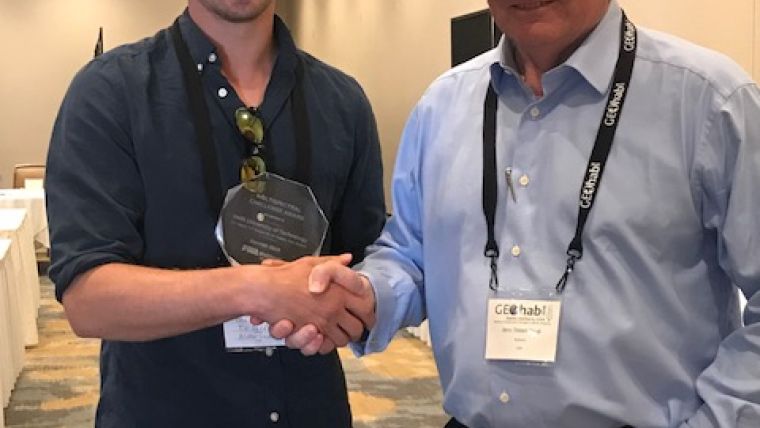Timo C. Gaida Wins Multispectral Challenge at GeoHab 2018
Timo C. Gaida from Delft University of Technology was recognised as the winner of the Multispectral Challenge at GeoHab 2018 for his research paper, 'A multispectral Bayesian method for improved discrimination performance of seabed sediment classification using multi-frequency multibeam backscatter data'. The three judges - Lloyd Huff, Jonathan Beaudoin and Chris Tiemann - selected Timo C. Gaida’s research paper among six submissions from universities from around the world.
R2Sonic launched the Multispectral Challenge at GeoHab 2017, following the introduction of the Multispectral Mode available with R2Sonic Multibeam Echosounder Sonic 2026.
Game-changer for bottom characterisation
The new feature enables the collection of multi-frequency backscatter data, spatially and temporally coincident, using one system only. Given that each frequency provides different acoustics returns based on the characteristics of the seafloor, it was believed that the Multispectral Mode could be a game-changer for bottom characterisation. Therefore, the goal of Multispectral Challenge was to validate this belief and to develop an algorithm that robustly and repeatedly could determine bottom type based on multispectral data.
All research papers took different mathematical approaches to attempt to segment the seafloor based on multispectral backscatter data. Learn more about all six papers here.
Also, all papers concluded that access to synchronized (in time and space) multi-frequency backscatter data is a cornerstone in the development of solutions for bottom characterization. “[…] [M]ultispectral acoustic data is a promising new technology, and its utility and applications […] have just begun to be understood in the benthic habitat mapping discipline.” (Bryan Cost, NOAA, “Mapping Marine Habitats Using Machine Learning and Multispectral Multibeam Data”, 2018).
Those who are interested in conducting research on multispectral bottom characterisation can get access to the data set and even collect multispectral backscatter data in a specific area, by contacting R2Sonic at [email protected].














